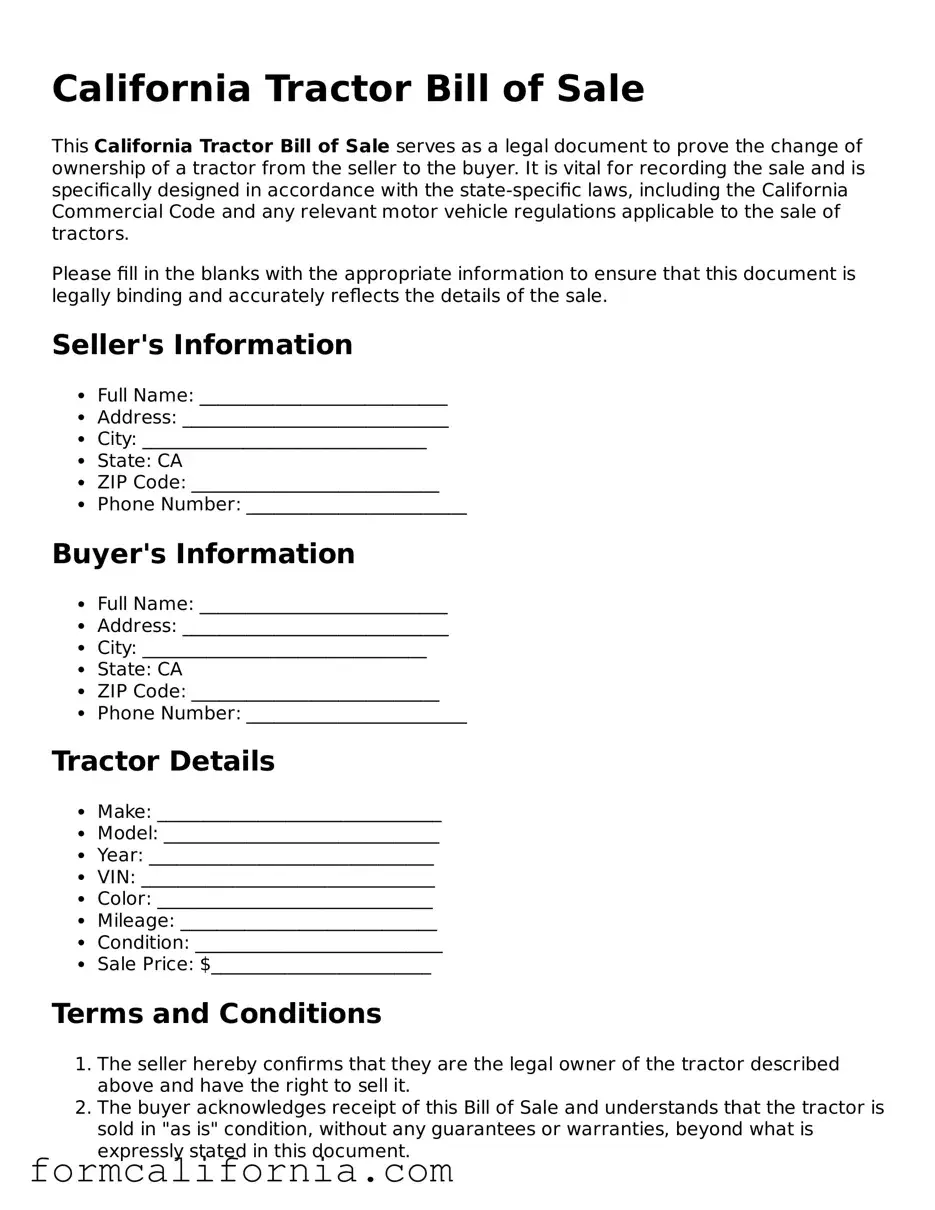The California Tractor Bill of Sale form is akin to the Vehicle Bill of Sale, which serves as an essential document in the process of buying and selling automobiles. Both documents act as legal proof of the transition of ownership from the seller to the buyer. They typically include comparable information such as the make, model, year, and identification number of the item being sold, as well as the names and signatures of the involved parties. Furthermore, they may contain terms of sale and acknowledge the receipt of payment, ultimately protecting both the buyer's and seller's interests in the transaction.
Similarly, the Boat Bill of Sale shares close resemblance with the Tractor Bill of Sale, as it is utilized in the sale and purchase of a boat. Despite the difference in the type of property being transferred, both documents fulfill the same legal function of recording the details of the transaction. Information such as the boat’s unique identification number, make, model, and year, alongside the sale price, and the particulars of the buyer and seller are typically recorded. This documentation is crucial not only for the immediate transfer of ownership but also for future registration and taxation purposes.
A General Bill of Sale is another document that parallels the Tractor Bill of Sale, serving as a broad instrument that can cover the sale of various items, not limited to vehicles or boats. Its versatility lies in its ability to document the sale of personal property such as furniture, electronics, or even livestock. Like the Tractor Bill of Sale, it includes critical details of the transaction, including a description of the item sold, the sale amount, and the details of the parties involved. It ensures a legally binding acknowledgment of the sale and purchase, applicable across a wide range of personal property transfers.
The Equipment Bill of Sale also bears similarity to the Tractor Bill of Sale by being specifically tailored for the sale of machinery and equipment. This can range from construction equipment to office machinery, aside from tractors. The document secures the transaction by detailing the equipment’s condition, make, model, serial number, and any other identifying characteristics, mirroring the specificity found in a Tractor Bill of Sale. By clearly defining the terms of the sale and the parties’ agreement, it provides a solid legal foundation for the transfer of ownership and helps mitigate future disputes.
Last but not least, the Livestock Bill of Sale is conceptually similar to the Tractor Bill of Sale, although it focuses on the sale of animals like cattle, horses, and other farm animals instead of inanimate objects. Both documents are pivotal in providing a clear record of the transaction, which includes the description of the sold item (or animal), the identity of the buyer and seller, the sale price, and any pertinent terms or conditions. They are crucial for legal, tax, and registration purposes, ensuring a smooth and indisputable transfer of ownership.
